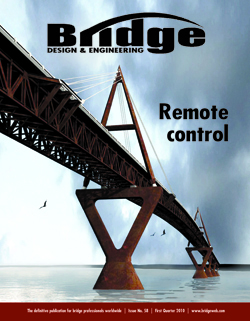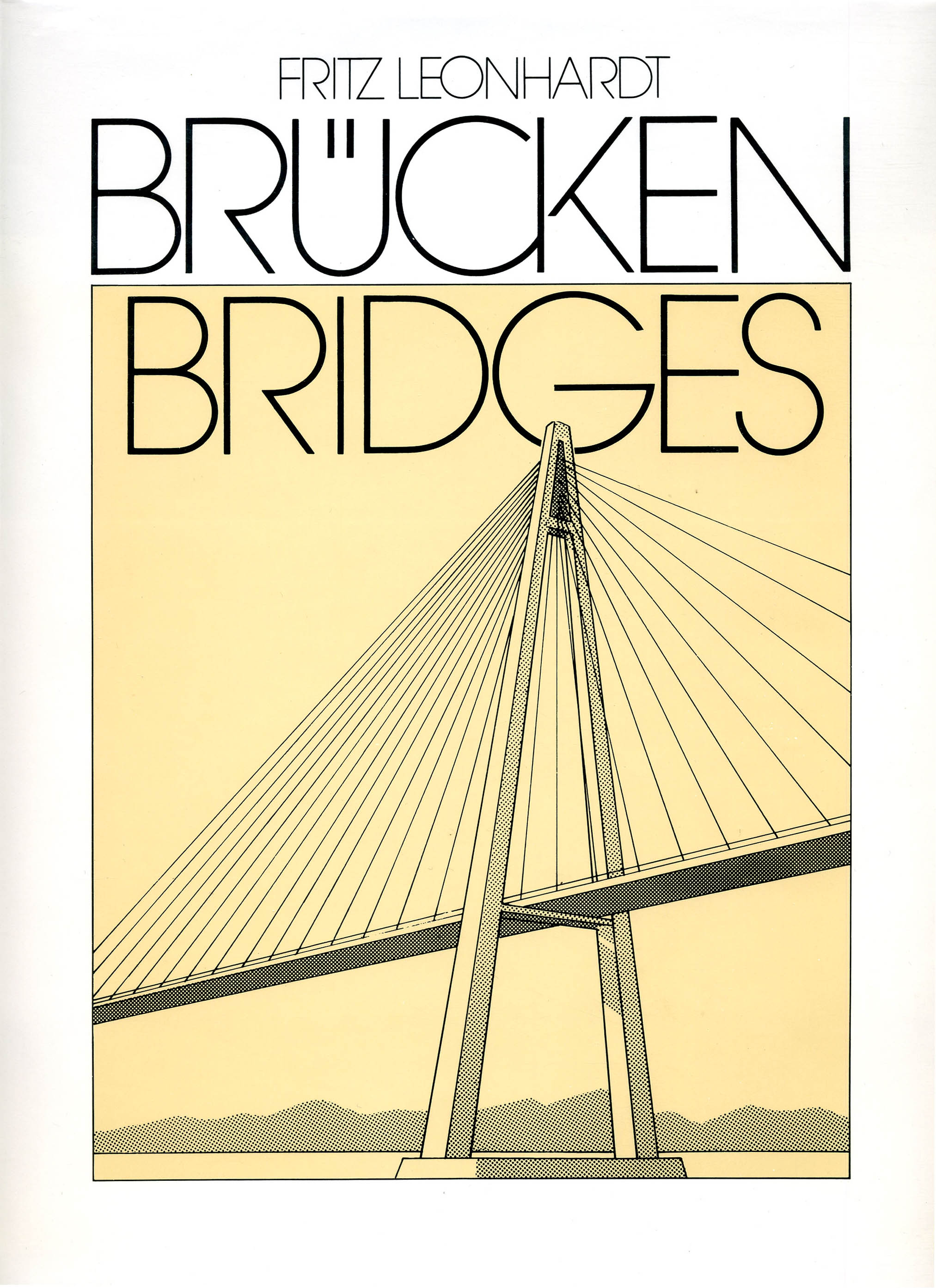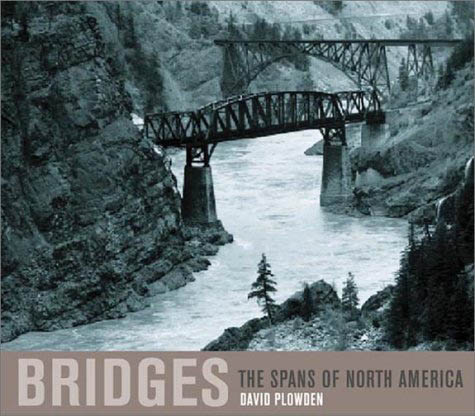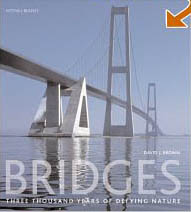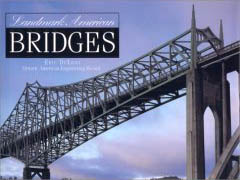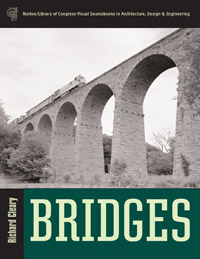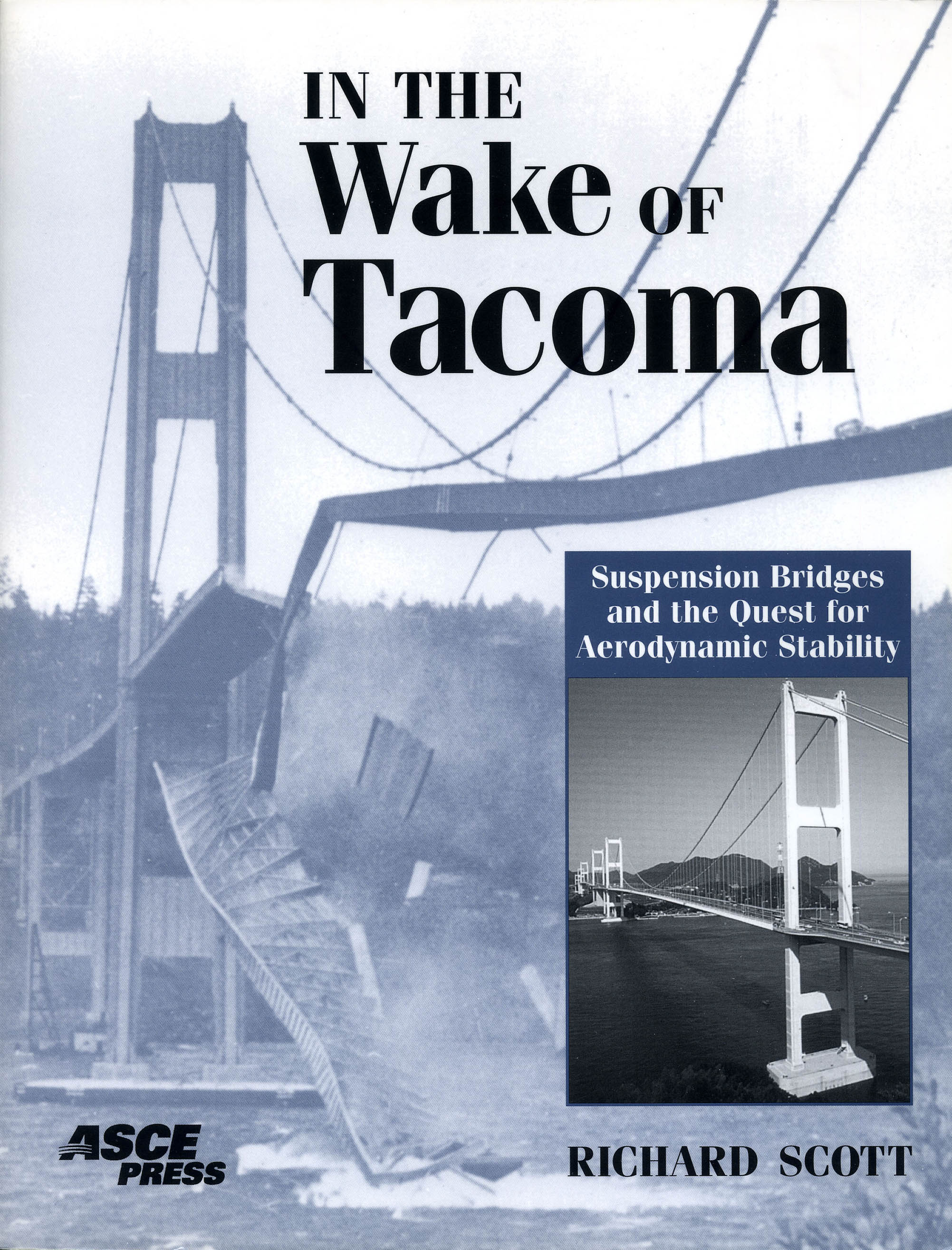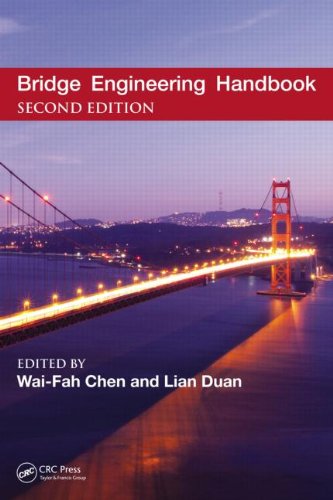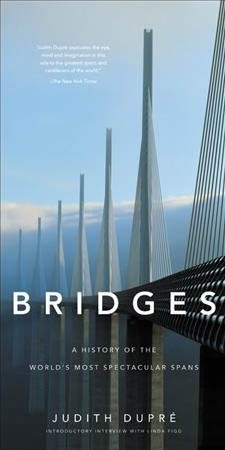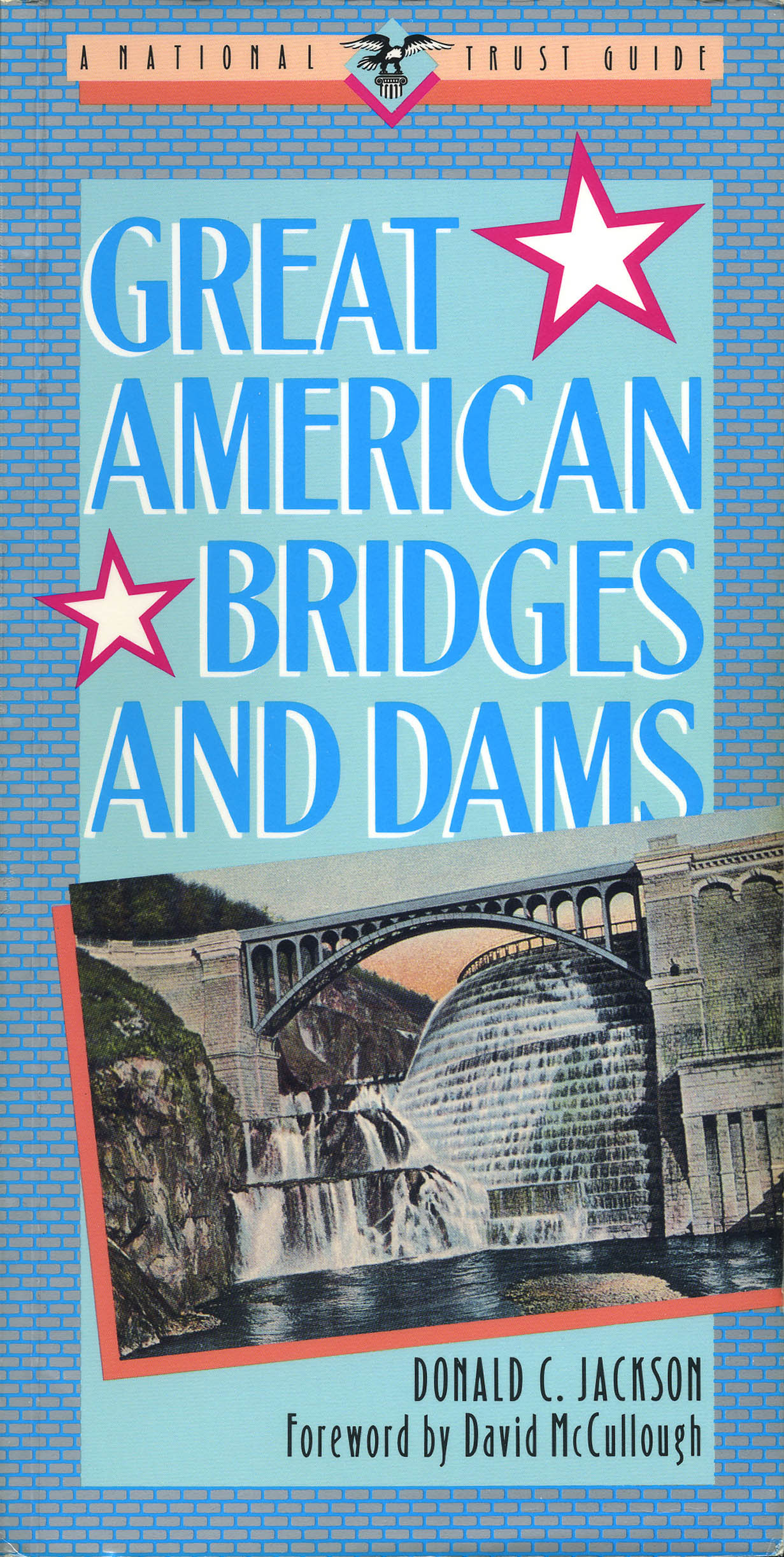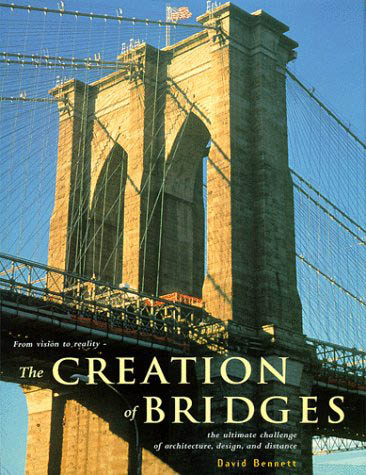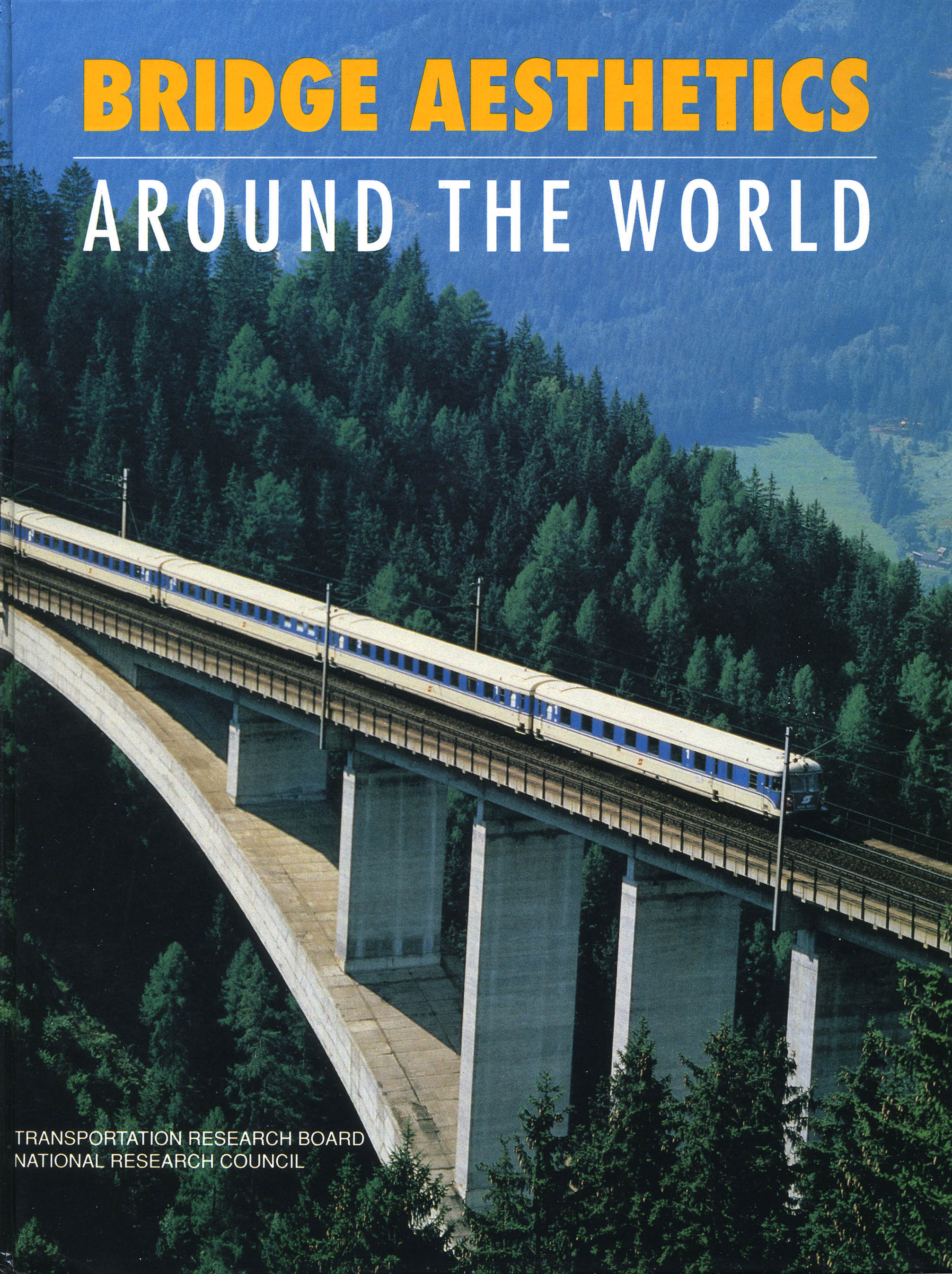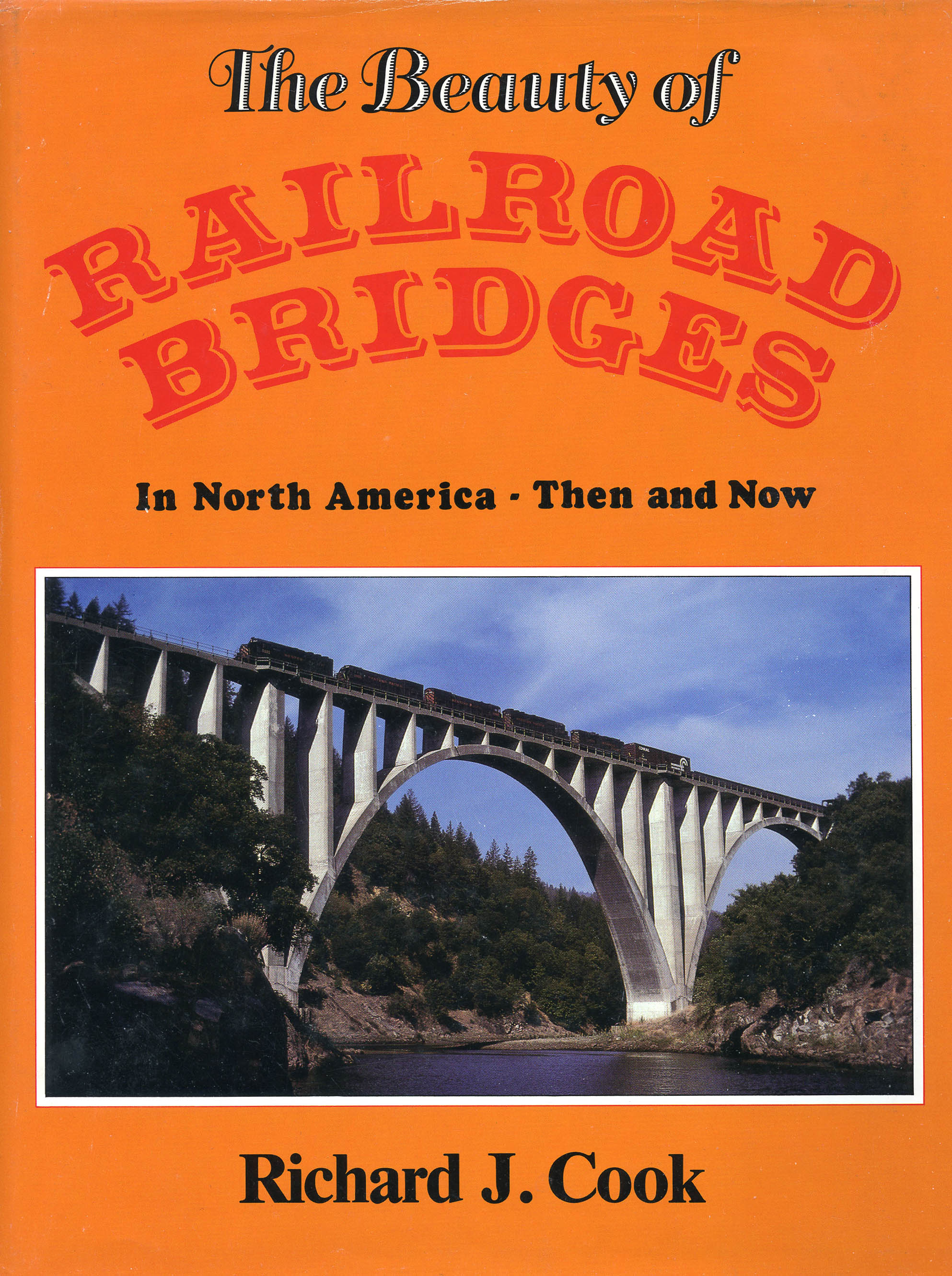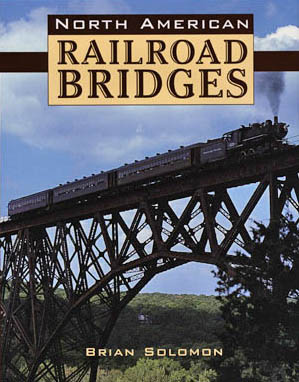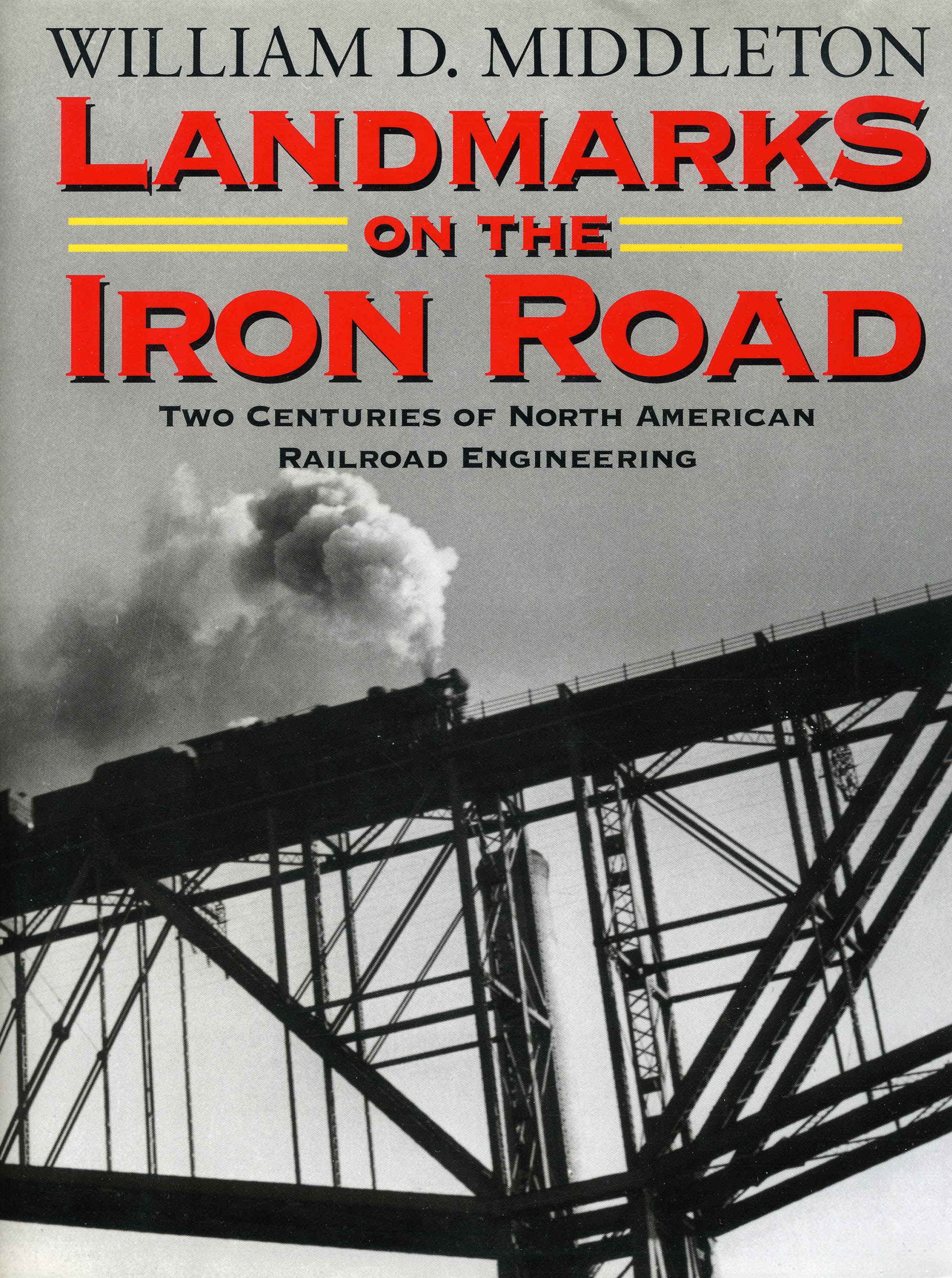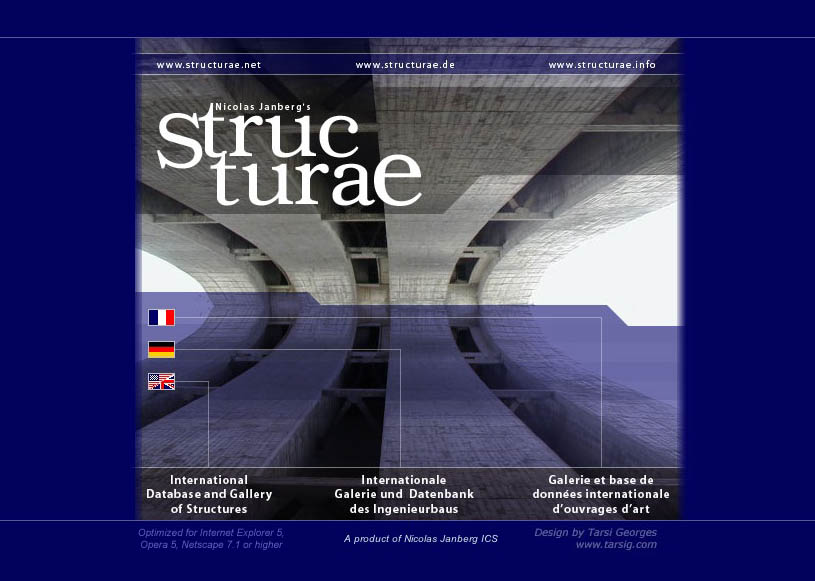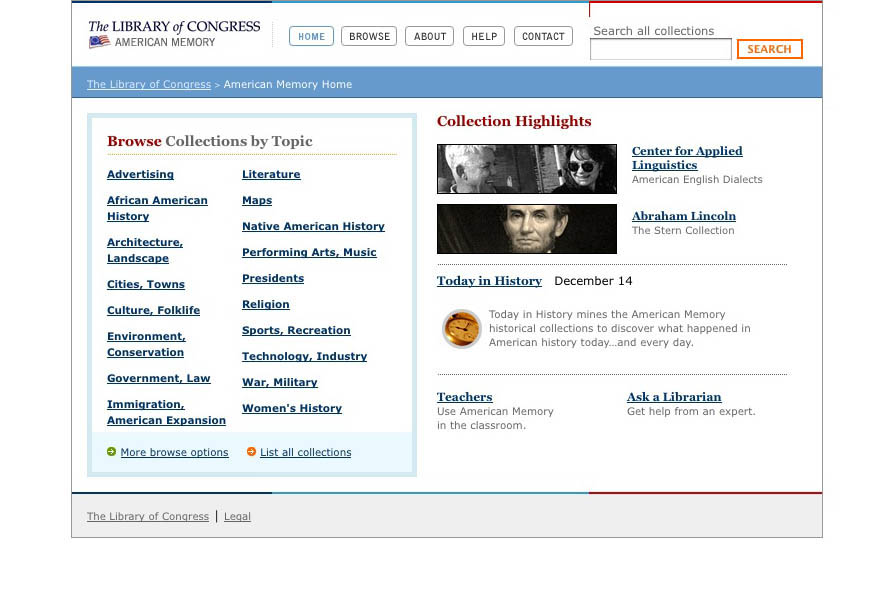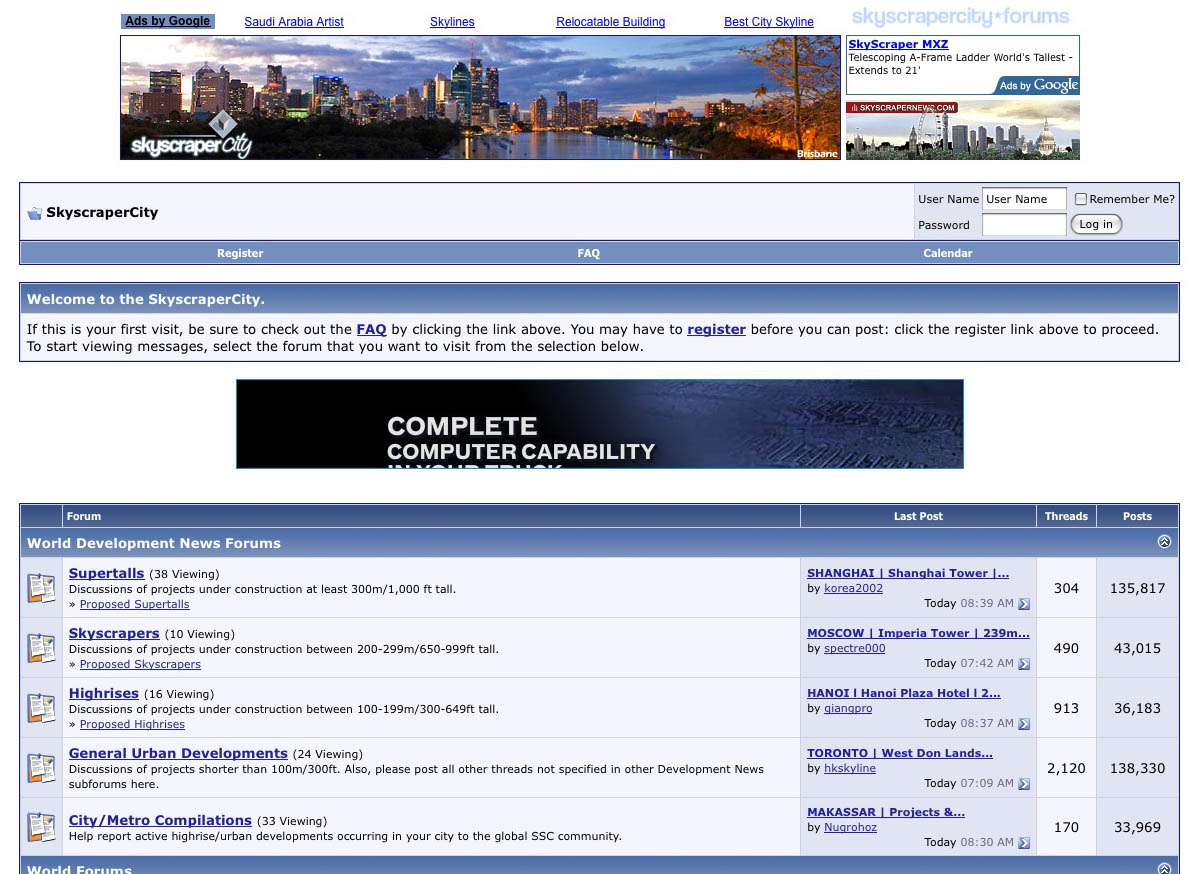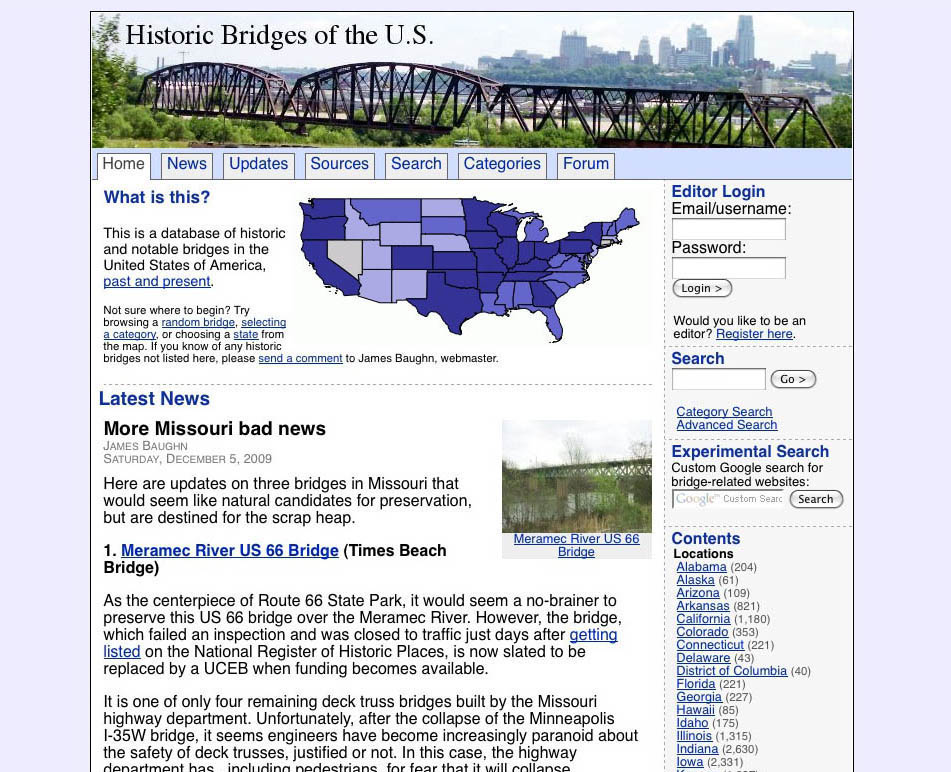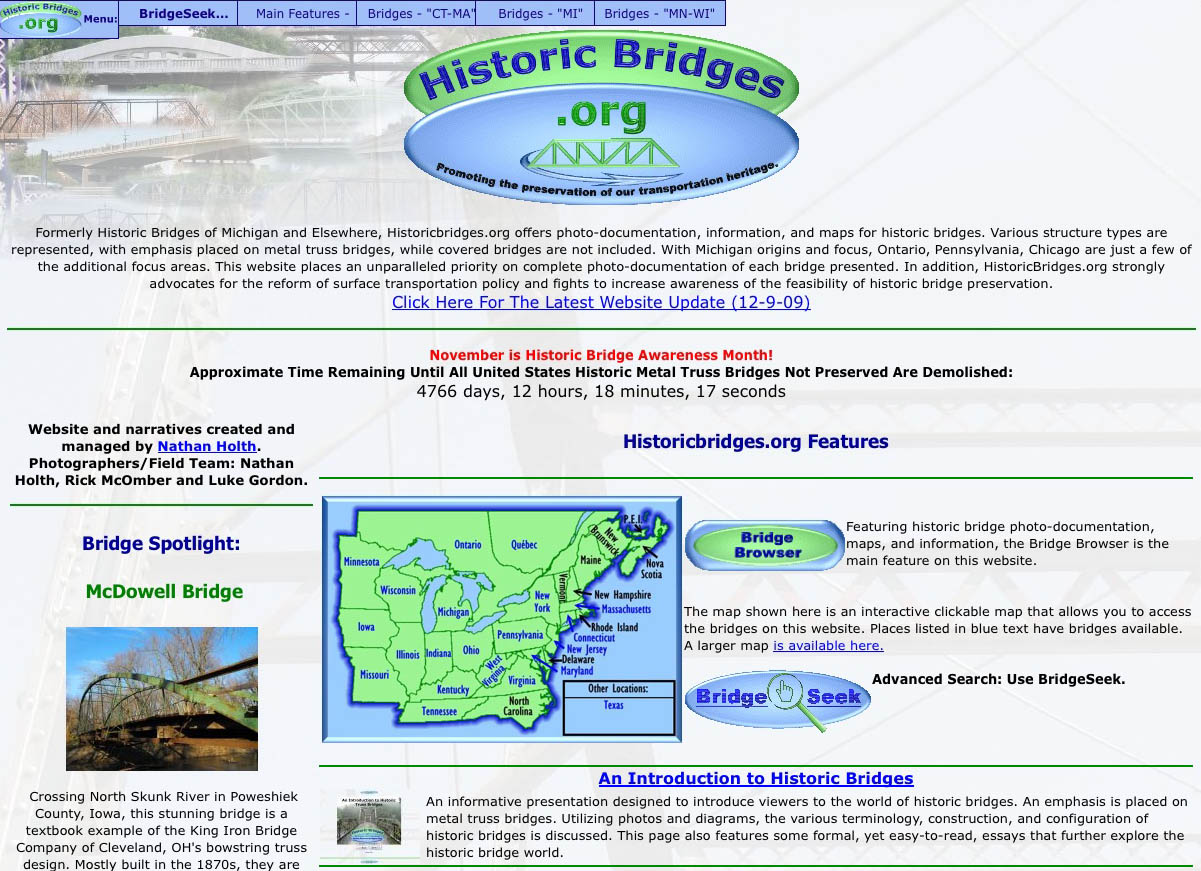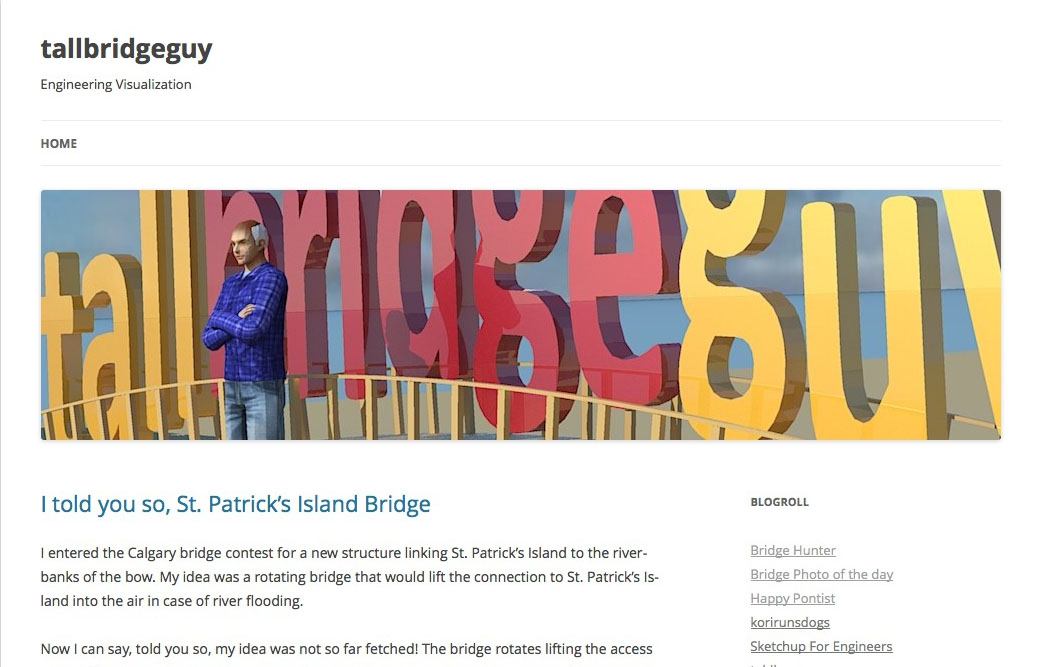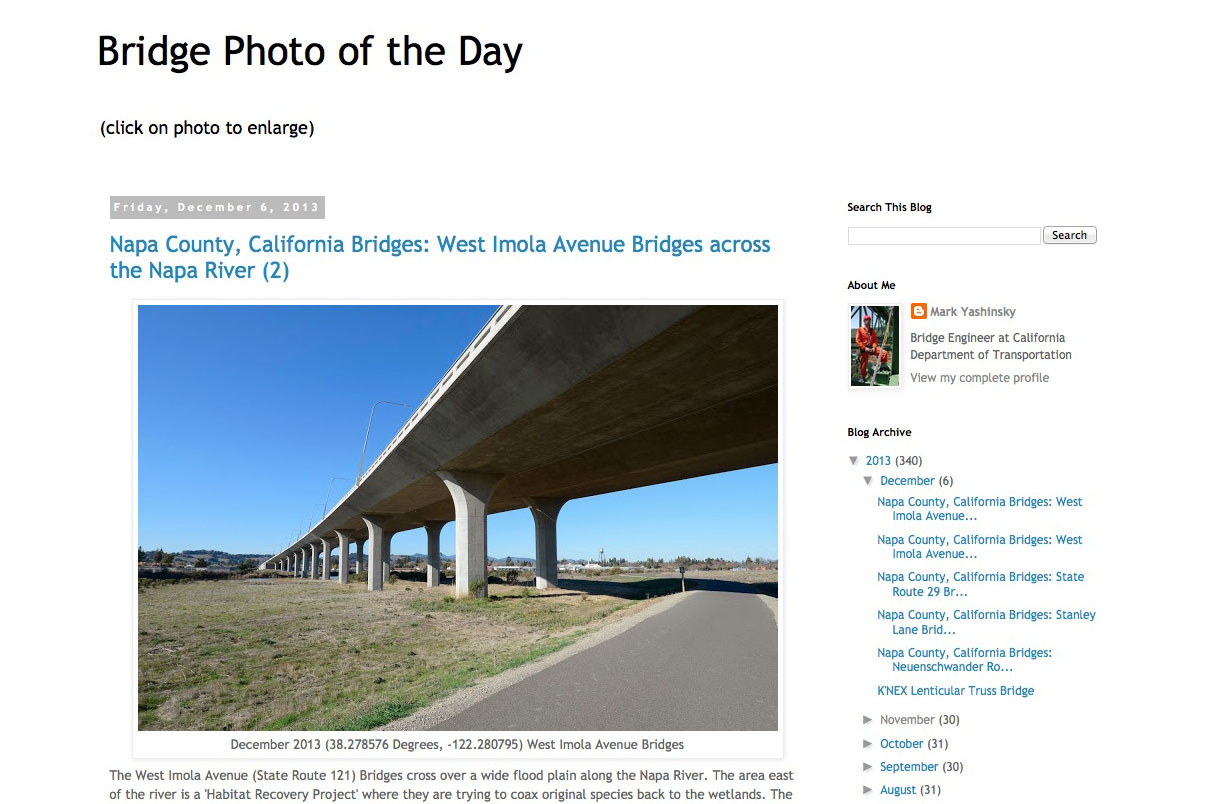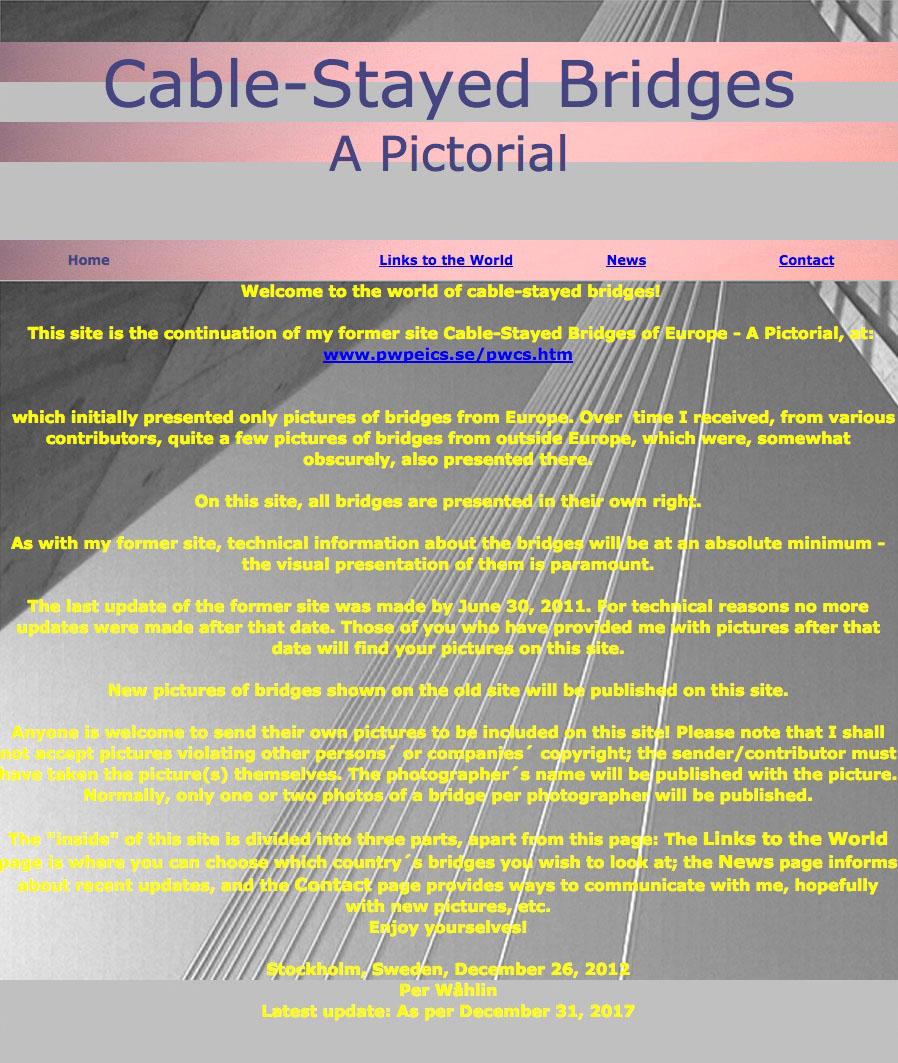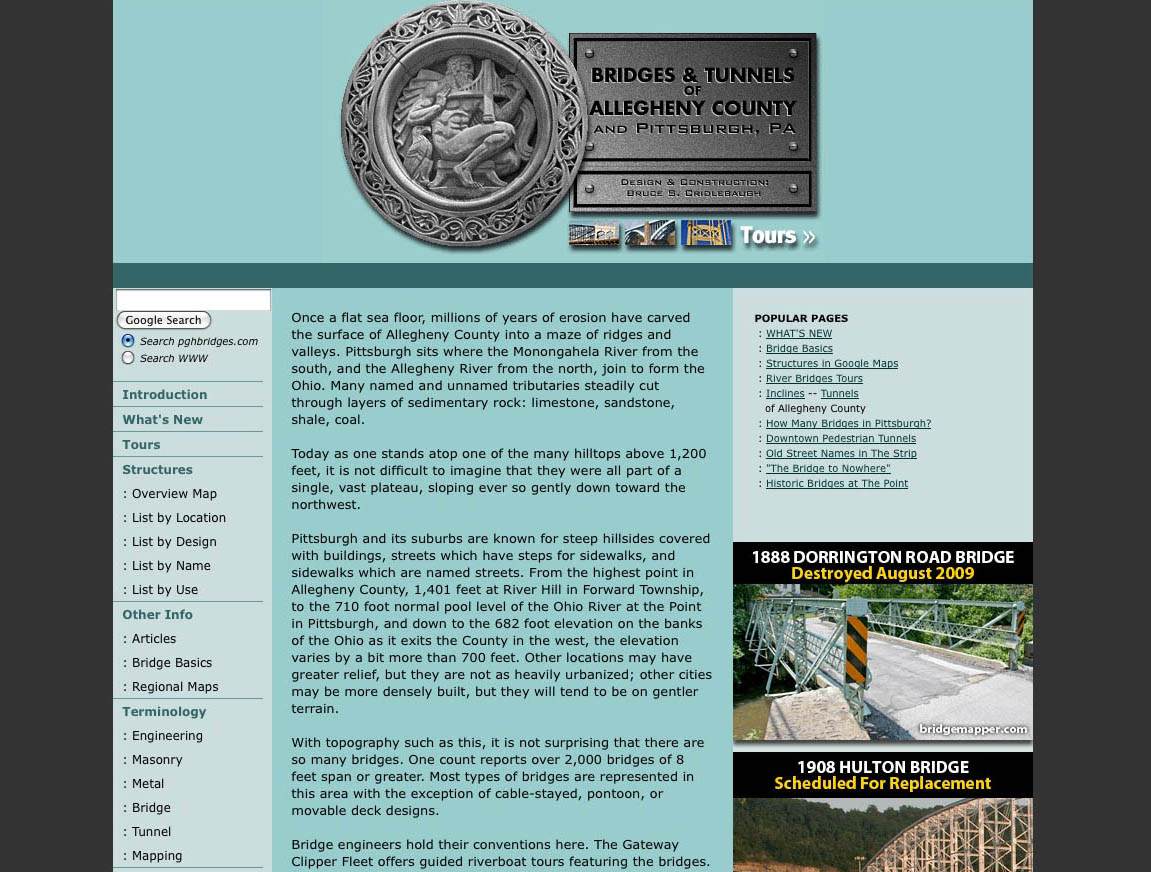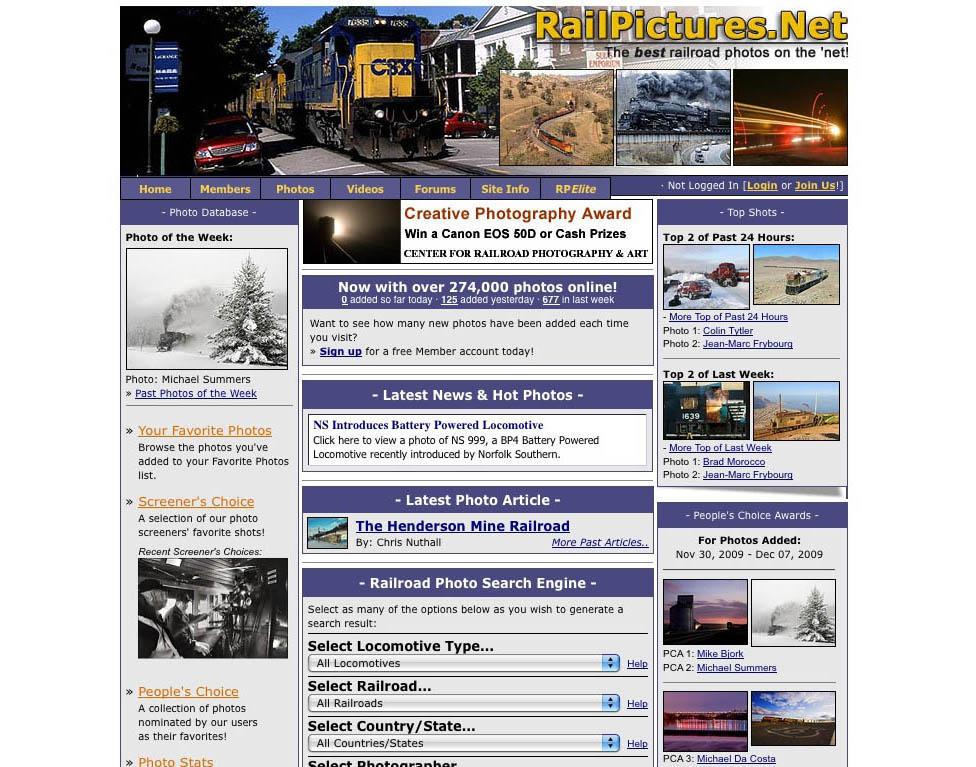10 Great Bridge Books and Web Sites
To better understand the many bridges within this web site, a basic knowledge of general bridge history and engineering principles will help. Compiled below are what I believe are twelve of the best books ever written about general bridge history and design. If you are someone who knows little about bridges, these will get you started on the road to becoming an expert. All can be obtained easily through English language internet book sellers. They are not technical books but a balanced blend of coffee table-style photography and informative but easy to read text. With one exception, these books cover all types of bridges. Two great books from the early 1900s that would be worthy of this list I have included as a free download. They are H. G. Tyrrell’s History of Bridge Engineering and J.A.L. Waddell’s Bridge Engineering. They are long out of print and can be expensive and difficult to find on the internet.
There are hundreds of other wonderful bridge books that highlight specific bridges or bridge types. Entire books have been written on one bridge, a bridge designer or bridges of a specific country. Henry Petroski's Engineers of Dreams: Great Bridge Builders and the Spanning of America, for example, is rich in detail on the challenges and drama surrounding America's greatest bridges and their designers. Since it is beyond the scope of this web site to cover all of these subjects, a good browse through a large library is recommended. Other great sources of bridge information include the industry trade magazines Bridge Design and Engineering, Roads & Bridges, Engineering News-Record and Civil Engineering. There are also many fine international magazines on road and bridge construction but they are often difficult to track down and subscriptions are expensive.
The 12 Best General Bridge Books
1. BRIDGE ENGINEERING: A GLOBAL PERSPECTIVE by Leonardo Fernández Troyano. The most comprehensive book ever written on the general subject of bridges, engineer and designer Troyano’s 775 page goliath leaves no foundation unturned. There are more than 200 pages on suspension and cable stayed bridges alone. Another chapter covers such rarely seen bridge types as floating, transporter and lift bridges. The book is packed with well over a 1,000 photos including hundreds of construction views showing not often seen examples of timber centering, cable spinning and wire compacting. If you can only afford one book on bridges, this is the one to own. Originally published in Spanish, be sure to get the English language version.
2. BRUCKEN / BRIDGES: AESTHETICS AND DESIGN by Fritz Leonhardt. One of the 10 greatest modern day bridge engineers, Fritz Leonhardt revolutionized the post-World War II German bridge scene. His book became legendary for its insistence on the importance of aesthetics, simplicity and the need to build bridges that will harmonize with their immediate surroundings. The book studies the positive psychological effects that light, shadow, color and proportion can have on a bridge and its environment. With over 500 photos, most of them in color, Leonhardt points out hundreds of examples of beautiful bridges while not shying away from criticizing design elements that are ill-proportioned or ugly. This book was published in 1984 and has both English and German and should not be confused with earlier or later books co-authored by Leonhardt. The book is so difficult to get you can pretty much count on it not being available.
3. BRIDGES: THE SPANS OF NORTH AMERICA by David Plowden. Probably the single greatest book ever written about North American bridges, Plowden brings us through the entire history of the continent’s bridge development from the early aqueducts of the 1800s to the cable stayed spans of the 1990s. The writing is almost as intoxicating as the gorgeous black and white photography. The glossy, sometimes stark images take readers from the mountains of Canada to the long forgotten industrial cities of the Northeastern United States. Many of these bridges have since disappeared. Chapters are categorized by the bridge period’s building material of choice including stone, brick, wood, iron, steel and concrete. Originally published in 1974, be sure to get the revised 2002 printing.
4. BRIDGES by David J. Brown. A perfect introductory book on bridges. In just over 200 pages, Brown touches on all the important bridge spans from the Pont du Gard and Zhaozhou to Millau and Messina. Facts, figures and the historical influence of every bridge is revealed through a mix of illustrations, photos and Brown’s excellent writing. Look for the 2005 updating of the original 1993 printing.
5. LANDMARK AMERICAN BRIDGES by Eric DeLony and BRIDGES by Richard Cleary. As former chief of HAER (Historic American Engineering Record), there are few people in the U.S. as knowledgeable as author Eric DeLony when it comes to American bridge history. His book showcases about 100 of America’s most influential and historical spans. There is an emphasis on early iron truss bridges with beautifully rendered elevation and axonometric drawings. A running timeline at the head of each chapter contains invaluable information on the progress of North American bridge development. A detailed appendix lists hundreds of other historic U.S. bridges that will be useful to historians and scholars. Author Richard Cleary has written a similar but even larger volume that continues to showcase classic American bridges that are endangered or demolished. Both books are a great companion piece to the HAER web site listed below.
6. IN THE WAKE OF TACOMA by Richard Scott. Despite having very few photos, “Tacoma” is nothing less than the best book ever written about suspension bridges. Spanning the post war period after the collapse of the first Tacoma Narrows bridge, author Scott investigates the development of more aerodynamically resistant bridge decks. Incredibly detailed but easy to read, numerous chapters cover design issues on dozens of the world’s largest and most influential spans from the 1950s to the 1990s. Chinese and Japanese suspension bridges - rarely discussed in western bridge books - are especially well covered.
7. BRIDGE ENGINEERING HANDBOOK, SECOND EDITION & HANDBOOK OF INTERNATIONAL BRIDGE ENGINEERING by W.F. Chen and Lian Duan. Despite their hefty cost, these 2 handbooks have a hefty amount of bridge information with more then 1,300 pages in each book on every aspect of bridge design and construction. Written for both bridge fans and serious engineers, these two volumes have the perfect balance of structural facts and diagrams without too much of the mathematical formulas that plague other bridge books. The second edition of the Bridge Engineering Handbook contains virtually all the information an engineer would need to know about any type of bridge—from planning to construction to maintenance with more than 1,600 tables, charts, and illustrations. Thoroughly revised and updated, this second edition includes 14 new chapters. The International Handbook has chapters on more then 25 countries that were contributed by more then 25 authors with examples of slab, girder, segmental, truss, arch, suspension, and cable-stayed bridges shown for every country. I must also confess there is an entire 55 page chapter on the World's Highest Bridges that was written by me! Finally a chapter covers the top 100 longest bridges, and the top 20 longest bridge spans for all the various bridge types.
8. BRIDGES: A HISTORY OF THE WORLD'S MOST SPECTACULAR SPANS by Judith Dupre. Originally released in 1997, Judith Dupre's book Bridges went on to become one of the most popular bridge books ever written. In 2017 she updated Bridges with a slew of new spans from all corners of the globe with glossy new wide format photos that are now in color. The twentieth-anniversary edition also includes excellent commentary and statistics on every bridge including newcomers like the Zhangjiajie Glass Bridge, Aizhai Bridge, the Gateshead Millennium Bridge, the Millau Viaduct and Zaha Hadid's Danjiang Bridge.
9. GREAT AMERICAN BRIDGES AND DAMS by Donald C. Jackson. Even though half of it is dedicated to dams, this narrow book is packed with an excellent sampling of bridges both famous and obscure from every region of the U.S. The history of each structure is discussed in great detail. Special emphasis is placed on older truss bridges and the importance of preserving them.
10. THE CREATION OF BRIDGES by David Bennett. In 230 pages, author Bennett covers all of the world’s landmark bridges in a well researched book loaded with spectacular color photos, including many that fold out. Also rare is an engrossing final chapter on the most influential bridge designers of all time. Coincidentally, Bennett has also written one of the best books ever on Roller Coasters, a subject I know even better than bridges.
11. BRIDGE AESTHETICS AROUND THE WORLD by the Transportation Research Board and National Research Council. An international group of the world’s leading bridge engineers and authors were gathered to publish 23 papers for a book on every imaginable aspect of bridge aesthetics. Not unlike Fritz Leonhdardt’s previous book Brucken / Bridges, this compendium captures the professional engineering knowledge that comes from the most seasoned and experienced bridge designers of our time from every major country in the world. There is much discussion on the age old dilemma of how to create beauty and art within the confines of cost, function and durability.
12. THE BEAUTY OF RAILROAD BRIDGES by Richard J. Cook, NORTH AMERICAN RAILROAD BRIDGES by Brian Solomon and LANDMARKS ON THE IRON ROAD by William D. Middleton. Railroad bridges and trestles always get short thrift in most books that try to cover the full history of bridges. These three make up the slack as they exclusively trace the history and engineering of North American rail bridges. The first book by Cook contains hundreds of beautiful black and white photos taken by the author. Chapters cover the early stone viaducts of the 1800s as well as the most famous turn of the century cantilevers at Poughkeepsie and Quebec. Concrete and steel arches, timber trestles and moveable bridges round out the mix. The second and newest book by Solomon is similar to Cook’s book with the added benefit of some gorgeous color photography, much of it by the author himself. “Landmarks” author William D. Middleton also concentrates on the most influential railway spans with an emphasis on the great designers of the time including James Eads, William Howe, Albert Fink, Gustav Lindenthal and Ralph Modjeski. He is the premiere expert on the subject and has contributed dozens of bridge related articles to TRAINS magazine over the last few decades.
With so many wonderful bridge web sites out there, it was difficult to narrow down a list to just 12. The goal was to pick out the ones that had a good variety of bridges along with well researched descriptions and extensive photography.
12 Best General Bridge Web Sites
1. STRUCTURAE. Created by French and German bridge engineer Nicolas Janberg, Structurae is the most extensive online database ever created for works of civil engineering. All manner of bridges, buildings, dams and towers are included from nearly every country on earth. The massive web site is available in 3 languages. One of the best features of the many bridge entries is the ability to link to the designers and engineering firms behind the bridge. Searching for a specific bridge type is easy as there are many categories including Lenticular bridge, Queenpost truss, Pontoon bridge and Stressed Ribbon bridge. Since the website has a close association to many engineering firms, it is often the only place you will find up close construction photos of new bridge structures.
2. HAER. Historic American Engineering Record With more than 3,000 bridge entries to date, no other web site has so many documents and photos relating to historic American bridges. Original design notes, extensive surveys and hundreds of engineering drawings will make you feel like an archeologist who has just stumbled onto a treasure chest of bridge information. Early American truss bridges are especially well covered. Most of the outstanding photos are in black and white by such top notch HAER photographers as Jet Lowe. Since engineering drawings are often missing or non-existent for older bridges, the staff at HAER has recreated drawings on hundreds of bridges by painstakingly measuring the full dimensions of each span on location. With an option to download these drawings in high resolution, they are perfect for research.
3. WIKIPEDIA - BRIDGE. Although it might be so obvious you ignored it, Wikipedia has grown to include nearly every imaginable type of bridge category with hundreds of examples from all over the world. Descriptions are clear and concise and are usually accompanied by at least one or two well chosen photos. A great feature of Wikipedia is the ability to “travel” up or down dozens of major waterways, accessing each bridge crossing as you go. Some entries have little or no information but that situation will only improve with time. Since anyone can add to Wikipedia, the website is a great place to post new information or images of an obscure bridge you know of. Wikipedia is also the only place to find large lists on all the bridge records from the world's longest suspension and cable stayed spans to the longest continuous truss bridges. Since the above link is only a general introduction to basic bridge types and certain categories, you can only find one of the thousands of spans by typing in the specific name of the bridge as there is no master list with every known Wikipedia bridge entry.
4. FLICKR. As the ultimate photo sharing web site, Flickr has also become the ultimate photo web site of bridges with more than 2 million images posted since 2004. Top notch bridge photographers like Bob Cortright show off their works of art among dozens of groups such as Bridges in Europe, Bridges at Night, Railroad Bridges and Pittsburgh Bridges. No category is too small or large with 2 members for the Stuckey's bridge to more than 10,000 members contributing to Bridges and Tunnels. You might not learn much about the engineering or history of these structures but you sure will be entertained. Many photos can be viewed in great detail as members usually post larger sizes that can be easily downloaded. Photographers can also post questions or make comments among their peers.
5. SKYSCRAPERCITY. Dedicated to urban developments around the globe, this web site blog is the best international news forum in the world on current road projects and bridges. Contributors who post on the forums are from countries and continents both big and small including China, India, Thailand, Malaysia and Russia as well as Eastern Europe and South America. There are more than 300 bridge threads on a variety of topics from Bridges in Hungary and Bridges of the Panama Canal to Footbridges and the World’s First Iron Bridge - many with several pages of images, news and information. With such a large international contingent, opinions on highway projects are often critical with bruised national pride leading to some lively discussions. Look for the bridge forum under the World Forum called Infrastructure and Mobility. Also be aware there is a lot of bridge information hidden within other categories. For example, if you go into the category of Latin American Forums and then into the subcategories of Latinscrapers, then Foros Generales and finally Infraestructura de Transporte you will see threads for such subjects such as Autopistas Mexicanas and Autopistas Colombianas that have dozens of pages of bridge filled highways.
6. HISTORIC BRIDGES OF THE UNITED STATES and HISTORIC BRIDGES. What initially began as two small databases of historical U.S. bridges around the respective regions of creator James Baughn’s hometown state of Missouri and Nathan Holth’s home state of Michigan has since grown to include nearly every state in the U.S. With a strong focus on the classic truss bridge, these web sites may possess the unique distinction of having actually saved several spans from meeting the wrecking ball. Baughn’s web site has excellent coverage on the status of the latest endangered structures with news-style reports that are updated on a weekly and sometimes daily basis while Holth offers an entertaining if no-holds-barred type attitude towards state and county bridge departments who have little regard for preserving old bridges that have become cheaper to replace than rehab. Historic Bridges of the U.S. now has more than 50,000 photos in a database that never stops growing. Extensive facts and photography of such details as pin connections, railings and manufacturer plaques attest to the passion of these two guys who are recording what bridge history they cannot save. Following in the footsteps of these two giants is Todd Wilson's Bridgemapper http://www.bridgemapper.com/index.html. Despite being the new kid on the block, this website is clearly the work of another passionate bridge fan and preservationist and will likely grow into another major bridge information resource. For those looking to do research on covered bridges, Dale Travis's encyclopedic website http://www.dalejtravis.com/cblist/cblistus.htm is a great place to start for U.S. bridges while Werner Minder's Swiss Timber Bridges http://www.swiss-timber-bridges.ch/home is the ultimate database on Europe's greatest covered bridge country.
7. BRIDGEMEISTER. With a focus on “Mostly Suspension Bridges” this web site has grown to include more than 2,000 examples from around the world. From the most obscure footbridges to the mile long superspans, this ever expanding online library seems to have them all with accurate historical information you will find nowhere else on the internet. Created by “bridgemeister” David Denenberg, the web pages are easy to navigate with a well organized search engine and an extensive bibliography. It also houses the photo collection of Patrick S. O’Donnell, a self confessed suspension bridge fanatic who has visited more than a 1,000 spans to date. David also oversees an informative and sometimes lively discussion of all things bridge related at the Yahoo bridge forum, accessible at http://tech.groups.yahoo.com/group/ManySpans/.
8. THE HAPPY PONTIST, TALLBRIDGEGUY and BRIDGE PHOTO OF THE DAY. Bridge design analysis and criticism is almost impossible to find on the internet. These 3 bridge blogs make up for that with a great variety of articles, news links and personal observations from three of the smartest bridge engineers out there.
While there are hundreds of film experts informing us on the latest movies opening every week, where can a bridge fan read about the best and worst bridges that open every year? The answer comes from The Happy Pontist, a bridge designer who critiques the latest spans - usually footbridges - that are opening or in the planning stages. His keen observations are not only on the aesthetics, proportions and details of these sometimes ill-conceived crossings but on the often misguided politics that lead to cost overruns from city councils who are too gullible or uninformed of the engineering risks as well as the engineering firms who are too eager to pitch bold concepts that look dazzling but are too challenging and complex to execute or fund. He carefully scrutinizes bridge design competition winners, citing the misfires as well as praising designs that are innovative and economical.
Another practicing bridge engineer, the tallbridgeguy Stuart Nielsen posts a great variety of videos, news articles and other assorted structural tidbits that are always educational and often entertaining. He also posts his imaginative ongoing bridge designs with various paint and design programs that may help and inspire other bridge engineers. Stuart also gives strong opinions with design papers and other documents to back up his ideas on the advantages and disadvantages of certain construction systems and techniques.
The third great bridge blog comes from California transportation engineer Mark Yashinsky. A world traveler and bridge fan, Mark photographs any and all types of bridges, scrutinizing and breaking down design flaws of spans new and old from classic one lane truss bridges to the latest cable stayed crossings. His images bring the viewer to such far flung locales as Japan and Mexico as well as within his home state of California where he takes us under and inside the spans and in the process we learn about pier caps, joints, welds, bolts, rivets, gusset plates, retaining walls, sufficiency ratings and a host of other design elements that are often hidden from the casual observer.
Read through the hundreds of reviews from these 3 experts and you will be on your way to becoming a bridge design expert!
9. CABLE-STAYED BRIDGES. With cable stayed bridges surpassing suspension bridges as the most popular style of long span bridging, it was surprising there were no websites out there specific to cable stayed bridges. Bridge fan Per Wåhlin changed all that when he created Cable-Stayed Bridges A Pictorial, a huge online photo collection of more then 1,000 cable stayed bridges from around the world. With his home in Sweden, Per has personally visited nearly all the CS spans in Europe, making this region especially well covered. Cable stayed spans from more then 50 countries are listed.
10. BRIDGES & TUNNELS OF ALLEGHENY COUNTY. It is rare to find an excellent bridge web site on a local region of the country. This makes the people of Western Pennsylvania especially lucky as this one is as good as it gets. Focused mostly on Pittsburgh, B&T of AC was created by Bruce Cridlebaugh as a historical record of the hundreds of spans, past and present, that have crossed the hills and rivers of America’s greatest bridge city. In addition to having facts, elevation drawings, articles and maps, the write ups include many of the big, behind-the-scenes players from the designers and contractors to the politicians and the public. Bruce also created an excellent "Bridge Basics" poster with drawings of every imaginable bridge type in his region that is a perfect reference for both beginners and experts in identifying different structures.
11. RAIL PICTURES. Railfans are among the most dedicated and serious photographers in the world. They will search out the best locations and wait for the perfect light. Lucky for us, bridges are an excellent backdrop to show the timeless beauty of the “Iron Horse”. Arches, trestles and all manner of truss bridges are revealed in thousands of images stored within the library of this classy web site. From their home page simply click on the category “Bridges/Trestles”. There are now almost 300,000 images in their database which can be accessed by state, railroad or even locomotive. One fun category covers the most popular photos of the week, month, year or all time. Of course if you want to see even more railroad related images you can always visit one of the more than 5,000 other railfan web sites out there. Just be sure to keep the midnight oil burning!
12. BRUECKENWEB. Even though most of this German web site is in its native language, it has one of the largest databases of bridge information on the net with a nice diversity of categories from the longest spans of each bridge type to the world’s 100 best bridges. Unusual themes include a running history of bridge disasters, bridge postage stamps and bridge images on currency. It also has one of the best news pages out there with constant updates on developments around the world along with an equally great links page.
